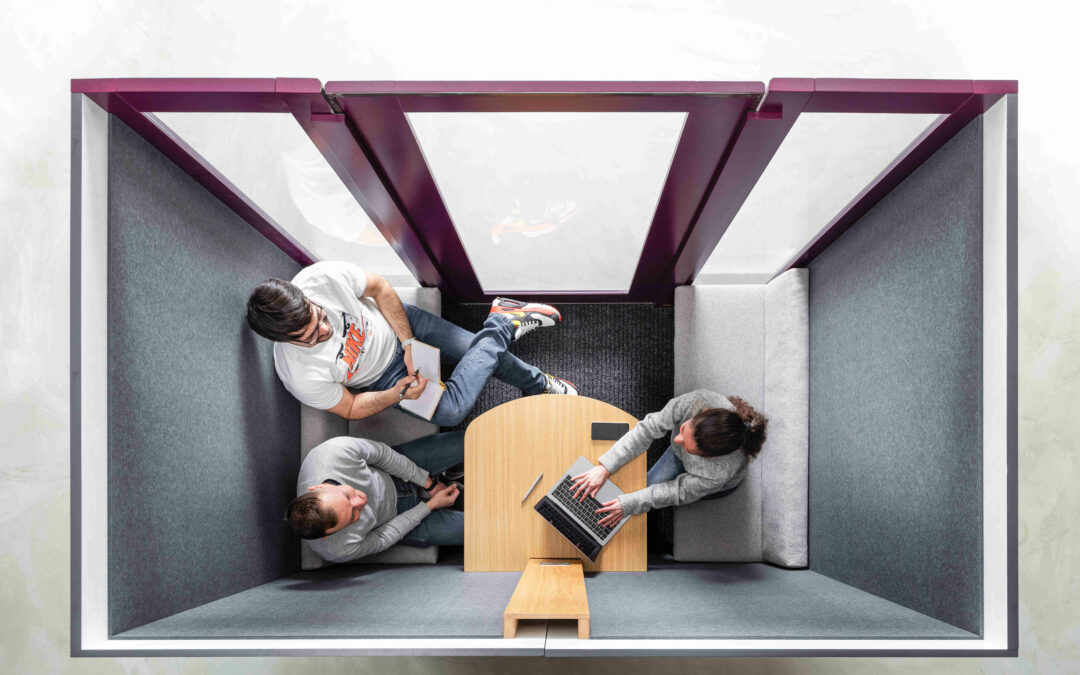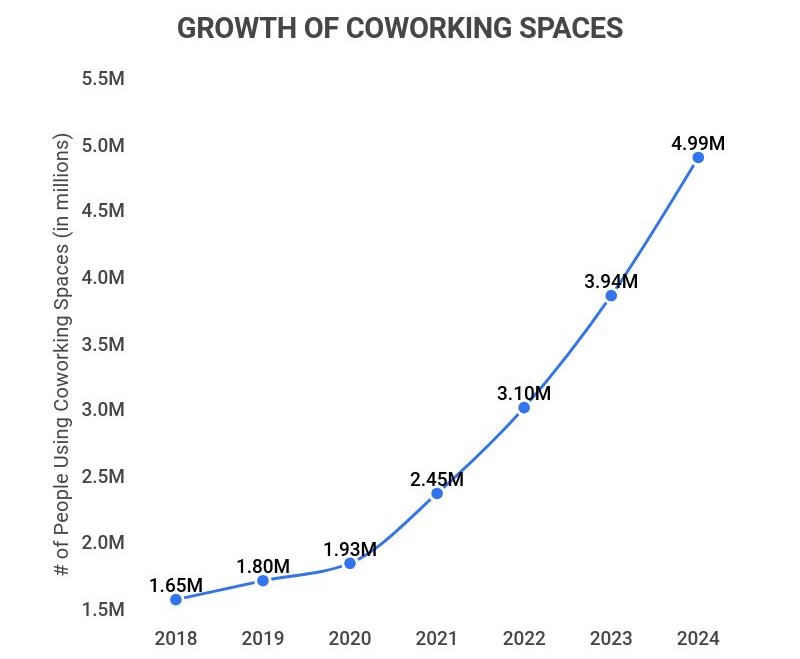Collaborative workspaces have become a global phenomenon. Around the world, businesses are investing in spaces where their employees can come together and get communal work done. This trend has even bled out into other areas of industry, with whole coworking spaces being built across the globe.
With 44% more people working remotely in 2023 than five years ago, this is hardly surprising. Yet, coworking spaces are far from the only location in which collaborative workspaces have become popular. Fostering teamwork with collaborative workspaces is one of the leading benefits. With the numerous upsides to better teamwork in an office, this is rapidly becoming an international corporate priority.
In this article, we’ll dive into how teamwork and collaborative workspaces are linked. We’ll discuss why these spaces foster teamwork, cover strategies to boost teamwork, and demonstrate how technology can help to foster more meaningful connections at work.
Let’s dive right in.
How collaborative workspaces foster teamwork
Collaborative workspaces have rapidly become an international trend. While it’s challenging to find internal data which displays how businesses are adapting to this trend, we can see its results reflected in the wider world. In 2012, there were around 1.65 million people using coworking space. By 2023, that number is expected to hit almost 5 million.
Even when working on solo projects or on agenda items that don’t require input from other people, having other hard workers around can inspire your own effective approach to work. In an environment where everyone is working, there is a sense that concentrating is the right thing to do. Think back to university libraries, where students go en masse to get work done. Having others doing the same tasks around you can be a major motivation.
For businesses, solo work isn’t the primary focus of using collaborative workspaces – although the added motivation is a handy benefit. Instead, being able to work with others on your team is an added benefit of all being in the same space.
In a collaborative workspace, if there are any questions that you need to ask, you have the correct people around you to do so. What’s more, if you’re working on an action item that concerns other people, you can sit next to one another and actively work together.
Finally, collaborative workspaces are also a phenomenal way of hosting meetings. Instead of having to trek to the meeting location and waste time with pleasantries, you’re already around the people that will be in the meeting. From there, you can seamlessly transfer into a meeting. Around 15% of all meeting time is wasted due to formalities, which means this tip could save you a huge amount of time in the long run.
Considering how bogged down everyone is with meetings, this will surely go a long way toward boosting employee morale, too.
Strategies to boost teamwork with collaborative workspaces
Setting up a collaborative workspace isn’t going to be enough on its own. Instead of just creating the space and letting people then use it however they would like, it’s better to create some clear usage rules. Only then will you start to get the most from these shared spaces. Think about how you’d like the space to operate and work backward from there.
There are a number of effective strategies you can use to boost teamwork with collaborative workspaces:
- Foster Communication – Allowing people to talk in these spaces is vital. If needed, you can supply office pods where employees can go to get deep work done.
- Build Time for Relaxing – Growing as a team means that you need to do more than just high-pressure working together. Pencil in more casual encounters and time for your team to simply spend time together.
- Highlight Success – Take time each week to highlight the great job that everyone is doing. Focus on teamwork as a principle and emphasis duos or small groups that are working well together.
- Top-Down Approaches – Change comes from management. Ensure that all of your managers know the value of teamwork and highlight its importance in the workplace.
By incorporating some or all of these tactics, you’ll be able to more effectively approach teamwork with collaborative spaces. While it might seem like an uphill battle at first, the collaborative workspace itself will help to familiarize everyone with your current efforts. You’ll be working powerfully as a team in no time.
Leveraging technology to boost teamwork in collaborative workspaces
Virtual collaborative workspaces are an effective way of boosting teamwork. Most of the time, your business will use some form of management system to keep everyone in the loop. However, you should endeavor to take this one step further. Virtual collaborative spaces are shared platforms and programs which sync absolutely everything across your team.
With this level of transparency, you’ll be able to see another employee’s calendar. With that, you can work out if they currently have time for a quick conversation or whether they’d prefer to continue with some deep work. Teamwork is all about adapting to provide the support that someone needs in that movement.
Using technology to create a greater level of synergy between employees will help foster positive behaviors. Over time, integrating virtual collaborative workspaces into your tech stack can be the key to unlocking more effective teamwork.
Final Thoughts
Businesses simply cannot overlook the power of teamwork. Considering that teamwork within collaborative workspaces is majority improved, it’s no wonder that businesses around the globe are starting to invest in more flexible spaces. Whether that is open-plan offices or unique multi-person office pods, collaborative workspaces come in many forms.
By focusing on building up your workplace’s ability to effectively work in a team, you’ll experience a number of impactful benefits. From getting projects done quicker to fostering a sense of community at work, teamwork is an endlessly powerful objective to focus on. While businesses may all want higher profits and more productivity, the secret really lies in the ability of your employees to work together, overcome challenges, and communicate effectively.


